Table of Content
Environmentally conscious houses, also known as green or sustainable houses, are created and built with consideration for the planet.
In the modern world, there is a growing awareness of the impacts of climate change and the importance of environmental consciousness. The term "Eco-friendly" or "sustainable living" has become the trend, leading to a significant change in people's approach to their lifestyle. The idea of environmentally friendly or sustainable homes has become incredibly significant. Individuals are beginning to understand that the decisions they make when constructing, running, and upkeeping their residences can greatly affect the environment. These eco-friendly houses not just lower our impact on the environment but also provide a healthier and more cost-effective lifestyle.
Houses that are eco-friendly, also known as green or sustainable homes, are built and planned with a focus on the environment. Their main characteristics consist of being energy efficient, using resources responsibly, generating minimal waste, and utilizing renewable materials. These houses strive to minimize their environmental footprint while offering cozy living areas. Here is the reason why eco-friendly houses are important:
Reduced Energy Consumption
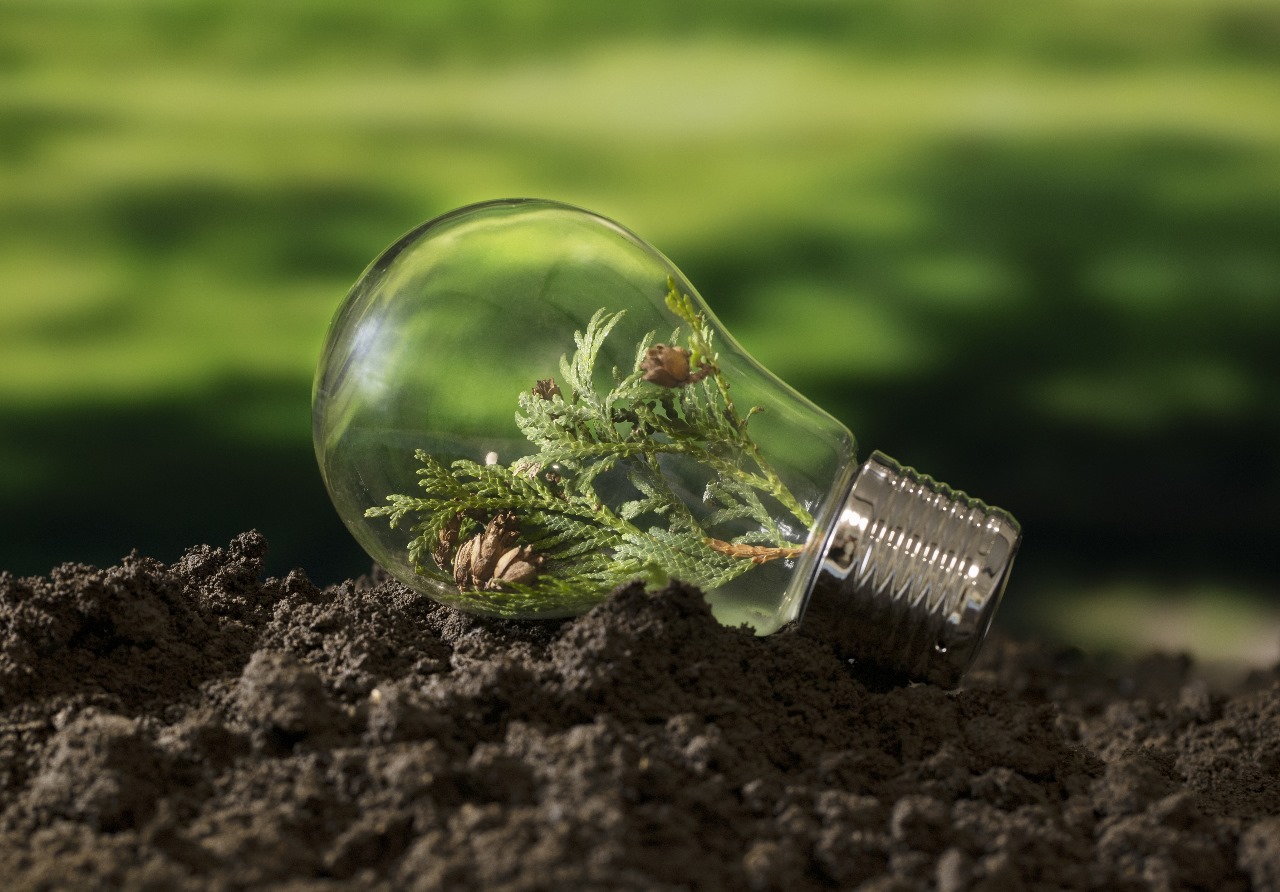
Green residences are constructed with the intention of being energy-efficient, resulting in lower energy consumption compared to traditional houses. They include insulation, double-glazed windows, and energy-efficient appliances, which decrease the need for heating and cooling. Not only does this lower energy costs, but it also helps in decreasing greenhouse gas emissions, playing a significant role in fighting against climate change.
Renewable Energy

Renewable energy sources like solar panels and wind turbines are frequently used in green homes. Generating their own electricity helps them rely less on fossil fuels, which in turn decreases their carbon footprint. At times, renewable energy generated can also fulfill the energy requirements of local communities. This marks a major move towards a future focused on sustainable practices and prioritizing green energy sources.
Also Read: Explore the latest PVC wall panel designs trending for bedrooms in 2024
Water Efficiency
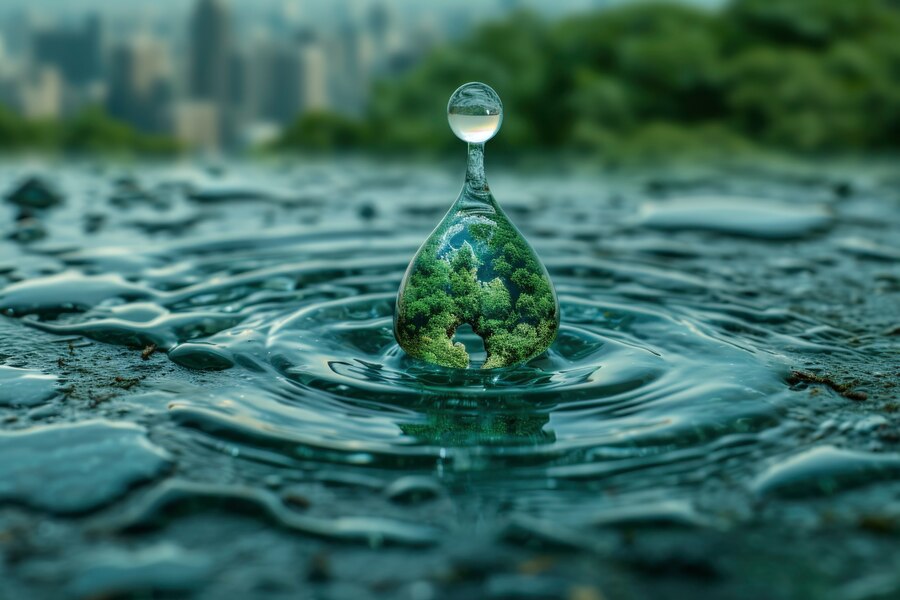
Water-saving fixtures and appliances in sustainable homes help decrease water usage. Additionally, they frequently include rainwater harvesting systems and greywater recycling, which helps reduce their environmental footprint and preserve this valuable resource.
Reduced Waste
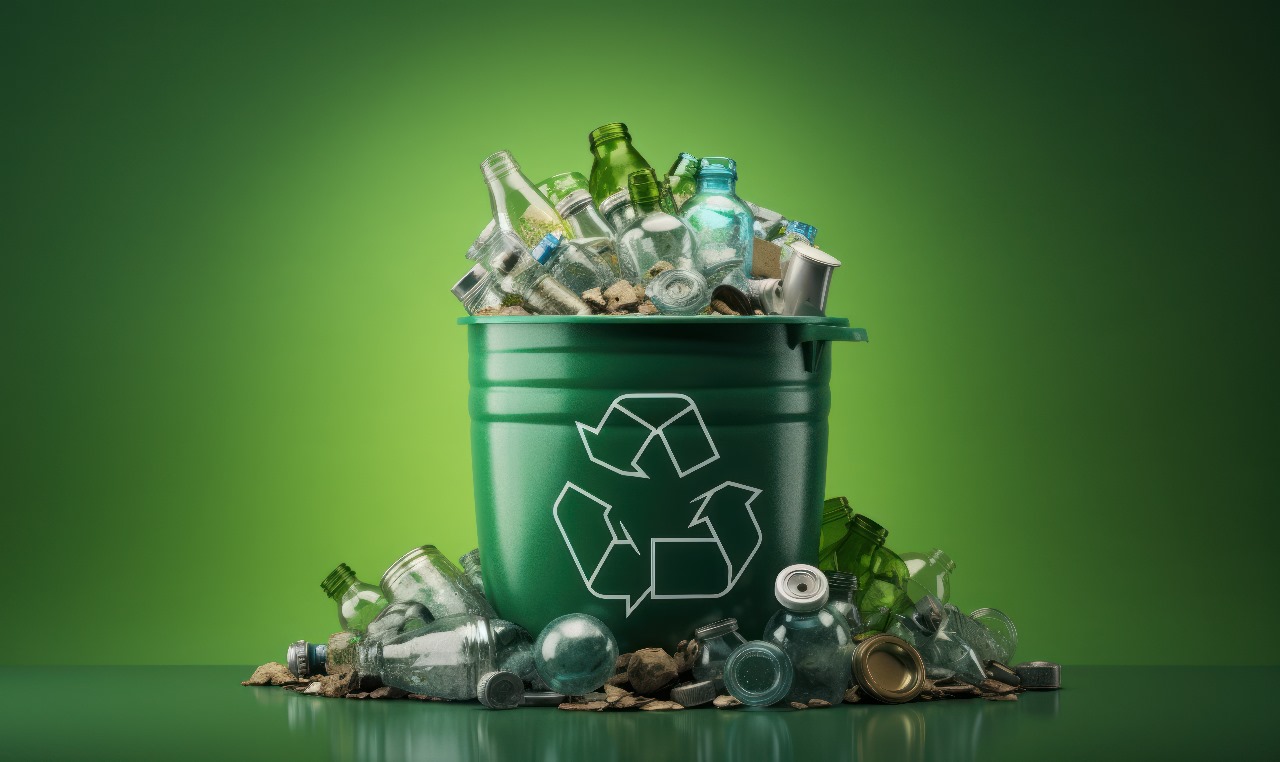
While being built, eco-friendly houses strive to reduce waste through the recycling and reusing of materials. Certain houses are built utilizing reused materials such as bricks and doors sourced from old demolished locations. This not just decreases the environmental effects of building but also highlights the significance of responsible resource control. Moreover, waste in these households is sorted into separate bins to reduce the amount of waste sent to landfills. They also create compost from the green waste.
Improved Indoor Air Quality

Green homes are created with the well-being of the residents as a top priority. They use safe building materials like low-VOC paints and cabinets free of formaldehyde. Green households include enough air-purifying plants like snake palm, areca palms, spider plants, that generate oxygen and purify the air.
Also Read: Timeless Beauty: Italian Chandeliers for Inspired Living Spaces
Natural Ventilation and Daylight
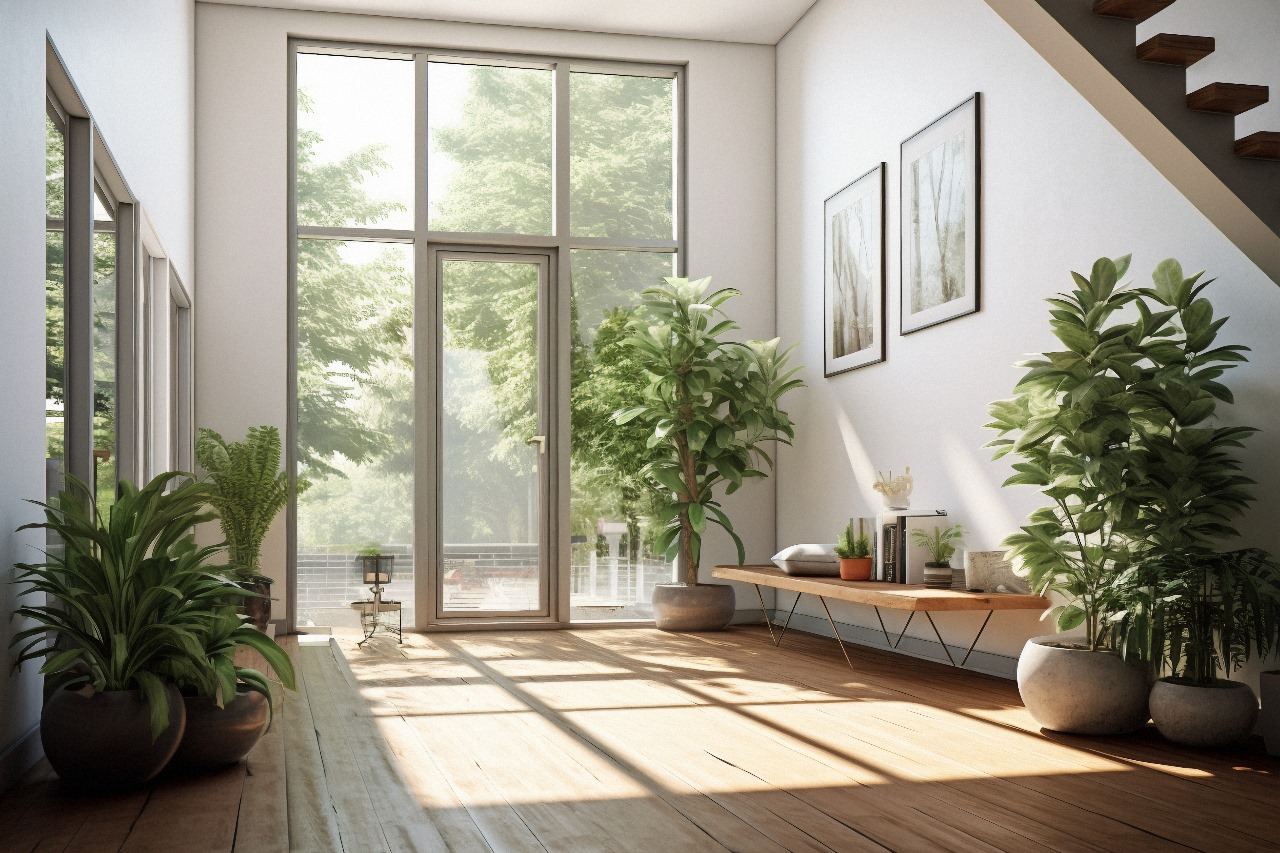
Environmentally conscious houses frequently include design features that optimize natural airflow and sunlight. This not only decreases the reliance on artificial lighting and cooling but also fosters a more cozy and welcoming environment.
Enhanced Resilience

Due to climate change causing more extreme weather events, eco-friendly homes are often built to be more resilient. This could mean sturdy structures, hurricane-resistant windows, and other features that aid homes in withstanding severe weather.
Also Read: Home decor ideas inspired by Indian folk art
Increase in Awareness

With the increasing focus on sustainable housing, developers are working closely with NGOs and government agencies to create platforms for sharing ideas, techniques, knowledge, financial support, and policies to promote eco-friendly homes. Advocates recommend training workshops and certificate programs to boost efficiency in the real estate industry for environmentally friendly development.
Market Value
Homes with green features are worth more in the market and usually increase in value faster than traditional homes. They are also becoming more popular, making them a smart choice for future investment.
Lead by Example
By selecting environmentally-friendly residences, people and neighborhoods are showing a strong commitment to preserving the environment. This motivates others to do the same and leads to a ripple effect in promoting sustainable living habits.
Environmentally friendly houses are an essential element in our fight against climate change and in building a more sustainable future. These residences demonstrate the concept of "green is important" by decreasing energy usage, carbon emissions, water consumption, and waste production. Residing in environmentally friendly houses and incorporating sustainable home goods into our routines is a positive way to help create a toxin-free environment on our planet.
Also Read: Discover over 10 trends to elevate your living room with floor tiles designs for hall in 2024

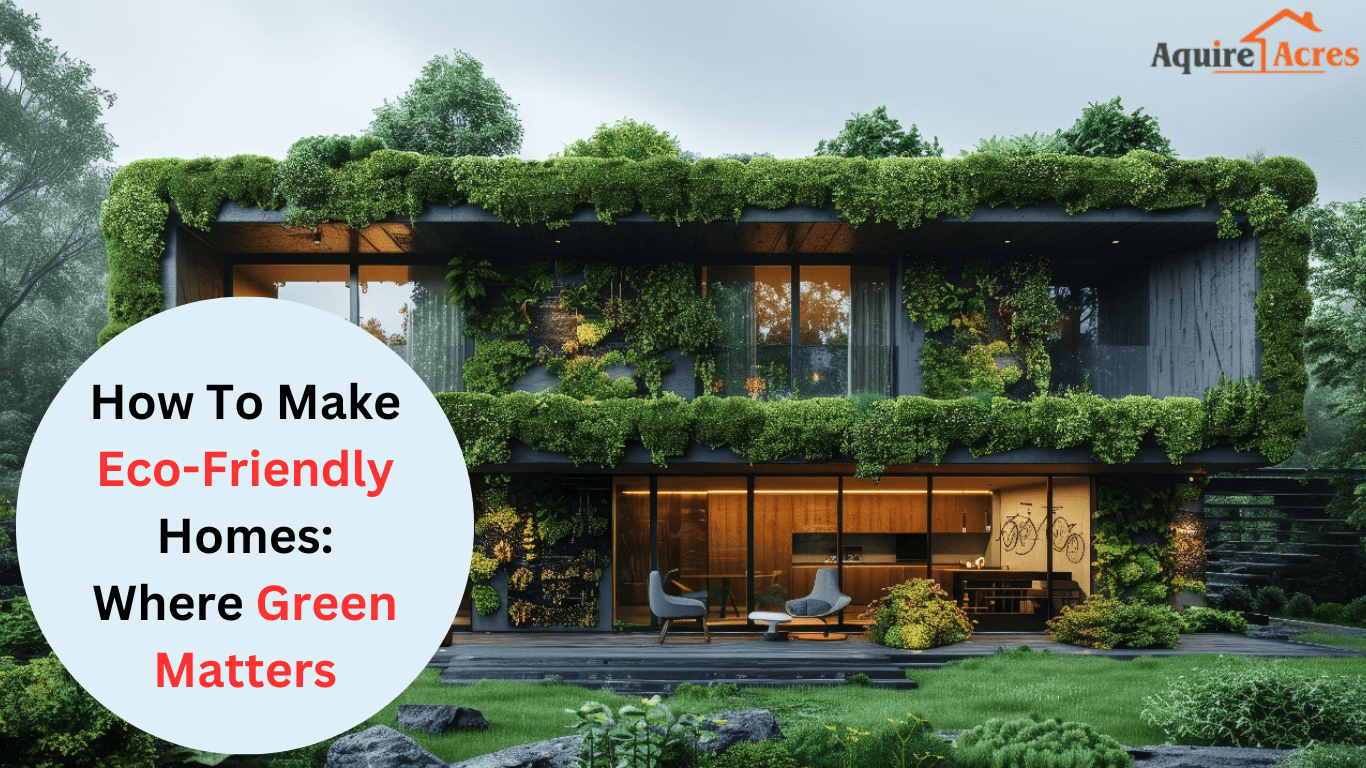

_1767683336.webp)

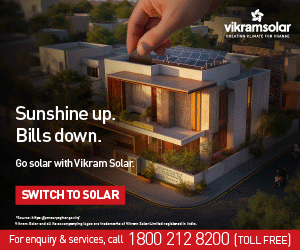



Ans 1. An eco-friendly house usually comes equipped with clever water conservation systems to save and reuse water efficiently, recycling natural rainwater that you can then use for your home. This includes systems like rainwater harvesting, which collects the rainwater that usually falls onto bigger surfaces, like your roof.
Ans 2. 7 Ways to be More Eco Friendly Use LED lighting throughout your home. Use more public transport. Wash your clothes less often. Eat less meat. Limit plane travel. Change pension supplier. Invest in electronic devices instead of paper.
Ans 3. Environment friendly processes, or environmental-friendly processes (also referred to as eco-friendly, nature-friendly, and green), are sustainability and marketing terms referring to goods and services, laws, guidelines and policies that claim reduced, minimal, or no harm upon ecosystems or the environment.
Ans 4. Five things you can do for the environment, today! #1: Adopt eco-friendly and sustainable lifestyle. Every kilogram of textiles produced, generates about 17 kilograms of CO2. ... #2: Say no to single use plastic. ... #3: Save Water. ... #4: Save Energy. ... #5: Segregate Waste.
Ans 5. Some eco-friendly ideas include: biodegradable cutlery, bamboo picnicware, reusable paper towels, silicone or stainless steel straws, reusable sandwich bags, compostable paper plates, waterless laundry detergent strips, countertop composters, and upcycled furniture.
Ans 6. What is the definition of eco-friendly? According to Merriam-Webster, the official definition of eco-friendly is: “not environmentally harmful.” When it comes to products, that means everything from production to packaging needs to be considered safe for the environment.